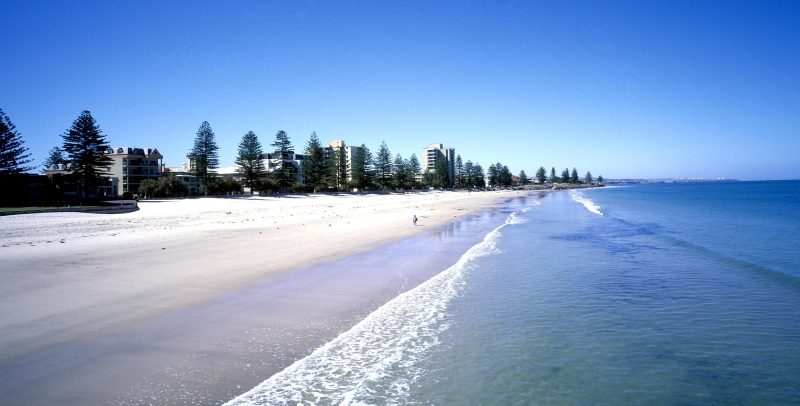
7 Facts About Air Conditioners in Adelaide
Living in Adelaide, we experience insufferably hot summers and chilly winters. You might not think much about it after it’s been installed, but there’s a lot more you should know about air conditioners in Adelaide, South Australia.
Whether you’ve got a split system air conditioner, a ducted system or a portable air conditioner, the need for efficient cooling in summer and warm air in the winter months is undeniable.
We’ve compiled seven facts about Adelaide air conditioning, some that might even help you save on money.
1. Air Conditioning Boom in Adelaide
Air conditioners are so widespread and come in a huge range of prices that it’s hard to imagine a home without one. Back in the day, you’d be hard-pressed to find many homes with an air conditioner because of the high cost to purchase one.
Domestic air conditioners hit the Australian market in the 1950s, and early models could set you back somewhere between $10,000 and $50,000. Flash forward to 2020, that’s equivalent to $160,000 to $800,000!
Since then, air conditioners have become increasingly affordable and there are so many different types to choose from. From 1999 to 2008, sales of domestic cooling systems nearly doubled in Australia, from 35% to 66%. Adelaide has always had a higher percentage of domestic coolers, likely due to our sweltering summers. Over this same time period, homes with air conditioning units went from 54% all the way up to 85%!
We’ve come a long way from those expensive air cons from the 1950s. Now you can install a new air conditioner with flexible and convenient finance options**.
2. The Rise of Reverse Cycle
In 1999, wall/window air conditioners reigned supreme in Australian households. 68% of homes had a wall/window AC. New technology and improvements meant that these air cons fell to the wayside and had to make room for reverse cycle ducted air conditioning and split systems.
By 2008, wall/window air conditioners dropped down to only being found in 30% of homes. Ducted air conditioners rose from 28% to 45% from 1999 to 2008. Reverse cycles increased from 35% to take the lead as the most popular air conditioner at 59% in this time frame. Split systems managed to double their presence, rising from 11% to 23% as well.
3. A Lot of Energy Goes to Heating and Cooling
Heating and cooling in Australia accounted for 40% of household energy usage in 2012. Collectively, we spent $2 billion on air conditioning over the summer months in 2019!
South Australians rely on air cons the most in summer compared to other states, with 83% turning it on. On top of having the most expensive electricity in the state, we’re probably paying a lot more for our air conditioning than we need to. Here are a few tips to help you save on cooling your home for the next summer:
- Run your AC at the optimal 25°C – most homes run their air conditioner at 22°C.
- Block the sun out with blinds and curtains.
- Use your ceiling fans in combination with your air conditioner.
- Take a cold shower, this will keep you cool at least for a little while!
Unless those 40°C days are pleasant for you, it’s unlikely you’ll be able to avoid a jump in the electricity bill come summer. These tips can help in making sure they don’t jump too high.
4. Reverse Cycle Standby Mode
Did you know that reverse cycle air conditioners have a standby mode and that it uses energy? That’s right, your reverse cycle AC is using energy even while you’re not using it!
A study by AIRAH on reverse cycle air conditioning showed that 17% of the energy used by reverse cycles in Adelaide, South Australia, was for standby mode alone. The remaining 83% was for heating and cooling. Thankfully this is only half of what Brisbane uses in standby mode, which reaches 31%!
Controllers for these air conditioners can use as much as 150W! For these reasons, it’s important you consider installing energy-efficient reverse cycle air conditioners to ensure you aren’t paying more for standby mode than you need to.

5. Adelaide Loves Reverse Cycle Air Conditioning
We love our heating and cooling on the Adelaide plains, and it shows. Adelaide has the highest reverse cycle run time over February and the winter months of June, July and August. In winter, our reverse cycles are used for more than 100 hours per month. That’s more than twice as much as the run times in Brisbane!
In winter, Adelaide reverse cycles are set to increase the temperature by 2.5°C on average at the peak of winter. Summers in Adelaide mean our reverse cycles cool the home to be 2°C cooler.
6. Mindful Energy Usage
With electricity prices being higher than we’d often like, it’s important we keep this in mind when running air conditioners throughout the year. Adelaide is at the forefront of energy mindfulness with nearly 60% of people claiming they are very or extremely mindful of their energy usage.
Given our love for heating and cooling, this is good news for our energy bills.
7. Air Conditioners Have Noise Restrictions
Did you know fixed appliances in your Adelaide home have noise regulations? This includes your air conditioner.
When purchasing an air conditioner, you’ll often see a sound rating in decibels (dB). Depending on the time of day, there are different noise requirements:
- Between 10 pm and 7 am – less than 45 dB
- Between 7 am and 10 pm – less than 52 dB
For unrestricted use of your air conditioner at all times of the day, you’ll need to keep the sound under 45 dB. When installing an air conditioner, you’ll also need to factor in the possibility of the outdoor unit becoming noisier with wear and tear.
From North Terrace in the city centre to the southern beaches and the outer reaches of the northern suburbs, most Adelaide families stay cool in summer because they’ve got the right air conditioner. When you need a blast of cool air in summer or warm air to keep you cosy in the winter, you need the expertise of Metropolitan Air Conditioning.
For more information about air conditioning in Adelaide, contact the heating and cooling experts at Metropolitan Air Conditioning. We deal in all leading brands and promise great value because our fees never change, 24/7, every day of the year.
Please note: This information is provided for advice purposes only. Regulations differ from state to state, so please consult your local authorities or an industry professional before proceeding with any work. See our Terms & Conditions here.
Published: 2020-07-15

































